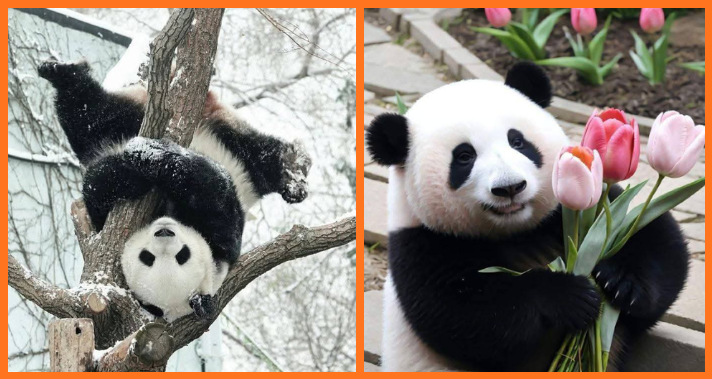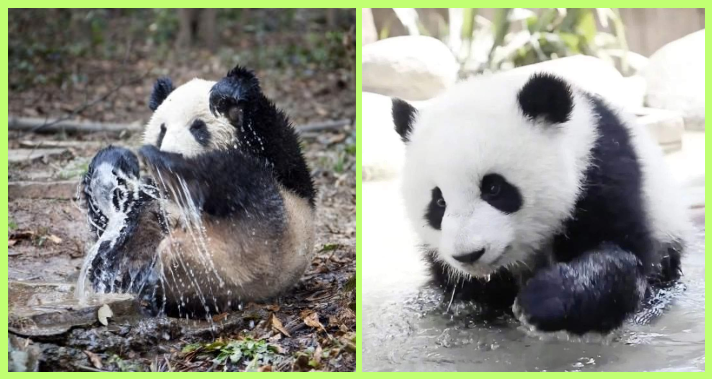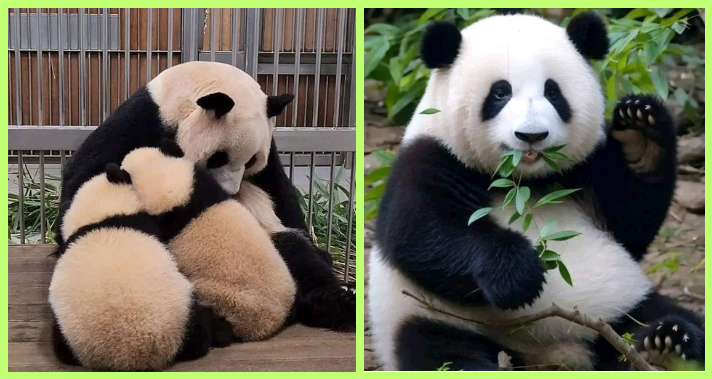Pandas live in the mountainous forests of China, a country where the weather is unpredictable and volatile. These forests are situated at an elevation above the sea level and the climate here is cool, misty and fresh. Sometimes it rains for many days, sometimes the snow falls on the ground, sometimes thunderstorms are heard through the trees. Despite all these weather changes, panda bears have a peaceful life. They do not migrate very far and do not hide for long. Instead they cater slowly and calmly to each condition. This blog describes the panda behavior in various types of weather, including rain, snow, thunderstorms, and seasons.
How Pandas React to Weather Changes
The areas of panda habitat are almost all occupied by dense bamboo forests. These forests are present in high mountains, hence the temperature is mostly cool. The weather in such areas is characterized by frequent changes. Rainfalls are frequent, particularly in spring and summer. The winters are cold and snowy, and skies are usually filled with fog and clouds. Pandas do not get away from these conditions. Instead, they go about their daily routine of eating bamboo, resting and quietly moving through the forest. Their bodies and physical behaviors are naturally suited to cope with these weather conditions. They may appear quiet and gentle but they are tough enough to tackle the cold, wet and windy environment of their home.
Panda habitats are typically rainy. Panda does not have fear of rain but they do not enjoy getting soaked for too long. When it starts to rain lightly, panda will not be bothered and continue their normal activities of eating or resting. Their dense fur is naturally oiled which keeps water from penetrating their skin and instead causes it to run right off. This will keep them warm and dry for a period of time. During heavy rain, panda usually seek shelters. They lie in the shade of thick bamboo bushes, large rocks or roots of trees that prevent the entirety of the rainwater falling to the ground. Pandas don’t make these natural shelters but they know where to find them. They admit, sitting or laying down, in quiet, till the rain comes softer than that. Rain also keeps the bamboo leaves fresh and moist which then pandas like to eat.
#1. Baby panda tries to see mother panda

#2. Rose for you

Winter in the mountains can be cold and there can be snow on the ground and branches of trees. Pandas are not like some animals in that they do not hibernate. Instead, they are active and they continue feeding on bamboo. Snow does not impede their movement, although it slows them and makes their movements careful. Their thick fur helps to keep them warm, and their round bodies help them conserve heat in. Panda sometimes move to lower altitudes during winter because such places have less snow and more bamboo. Their strong paws help them to walk on snowy ground without sinking too much in it. Pandas can find bamboo even if it is covered with snow because of the smell. They use their paws and mouth to push away the snow from the food underneath. They don’t frighten them, they just adjust to it quietly.
#3. Just a fluffy potato living my best life
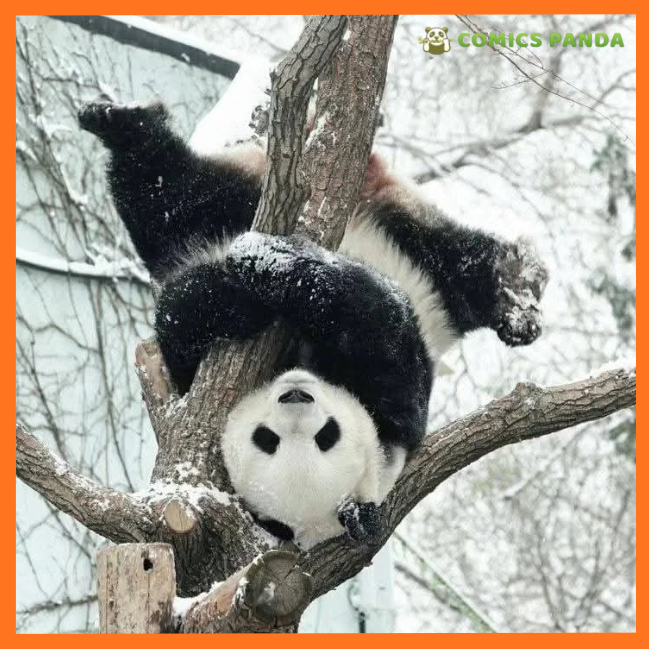
#4. Me trying to diet but snacks keep calling my name
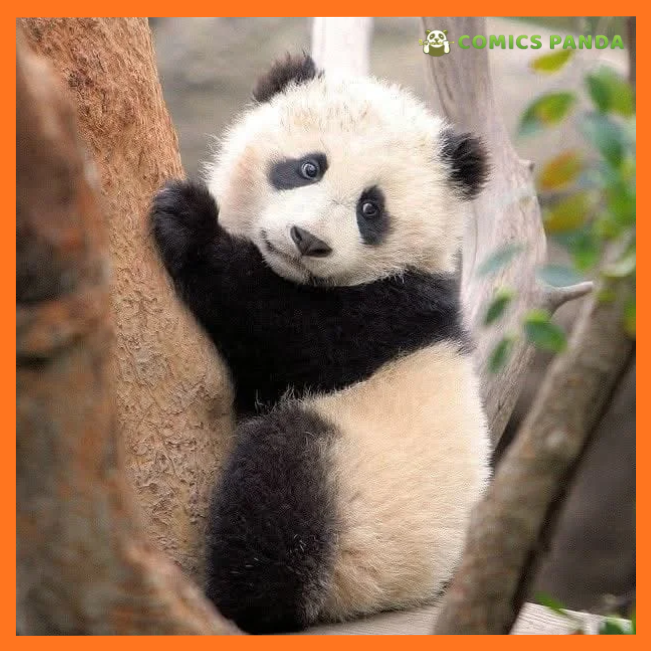
Thunderstorms are loud and abrupt, and can be characterized by strong winds and heavy rain. Pandas do not have a high fear reaction as some animals do however the panda is cautious. Pandas often stop whatever they are doing when a loud thunderclap or lightning flash occurs. They sit calmly looking around for any danger and listening. When the storm is too noisy or the wind is too strong, pandas will walk slowly to places with good shelter such as caves, hollow trees and dense clusters of bamboos. They remain there until the weather has settled down. They do not panic or run. Their instinctive nature is to lie down, remain covered and keep quiet during storms.
#5. When you wake up and remember you have zero responsibilities

#6. Two brother pandas look so cute

Wind is another feature of weather that pandas experience in the mountains. They are not bothered by light wind, but strong and cold winds cause them to search for cover. They refuges themselves behind rocks or thick trees to avoid the wind. Their fur helps to protect them, but too much cold wind and they are uncomfortable. On hot days, pandas find out a place to cool themselves. They lie down under thick bamboos, besides a stream or inside a cave where the ground is cooler. They do not sweat like humans. Instead, they minimize movement and rest more frequently in order to stay cool. Their black and white fur could absorb some of the heat, but they offset it by resting in cooler places and drinking water from streams.
#7. Master of chill and snack attack

Pandas are not different, they change their activities a little bit in accordance with the different seasons. In the spring, bamboo shoots are fresh and tender, rain is frequent and the forest is rich in moisture. Pandas feed on new bamboo growth and are more mobile in order to locate food-bearing areas. In the summer heat increases in lower mountains. So panda go to higher areas where the weather is cooler. They keep in shade and are away from the extreme heat of the sun. They drink from streams and can therefore keep themselves hydrated. In autumn the air is again cooler. Bamboo leaves are still in places, and there is no rain. Panda spend times to store the energy by eating more. In winter time, there will be a decrease in the temperature, and wintertime starts to snow. Closer to ground level, panda walk to lesser snow. They keep eating bamboo and resting more frequently in order to conserve energy.
#8. I did not choose the nap life, the nap life chose me

Pandas are naturally adapted to cope with weather conditions. Their thick coats are like clothes in the winter and protection in the rain. Their powerful paws help them to grip snow, mud, and wet ground. They are calm in nature and are not afraid or panicky in the situation of storms. The storing of heat in the rounded bodies and their slow lifestyle conserves energy. Their diet also assists them in their survival. Bamboo can be grown in all seasons including winter. Pandas can live on it throughout the year, and it remains green through the snow. This reliable source of food causes them not to need to hibernate or to travel far to find food.
#9. Baby panda loves to drink milk

The unique quality of the pandas is their peaceful interaction with nature. They do not battle weather or attempt to flee from it altogether. Instead, they live with it, adapt their movements and make use of their surroundings intelligently. They do not rely on the construction of shelters or the cache of food. Their survival is ensured as they are in harmony with the surroundings. They also do not waste energy. They can feed slowly, rest frequently and conserve energy by remaining calm whether it is raining or snowing. This passive behavior is their greatest asset.
#10. I am not lazy, I am just saving energy

Pandas are calm and quiet in their responses to rain, snow, thunder, and other changes in weather. They do not fear nature. They adapt to it. Their thick fur, stout body, keen senses, and peaceful nature, help them to live comfortably in the change of weather of the mountain forests. They teach us that being around to survive is not always about power and speed. Sometimes, it is a matter of patience, balance and harmony with the world around us. In case you enjoyed this blog keep it with you and pass it over to other people and also visit our site to read more about nature and wilderness.

